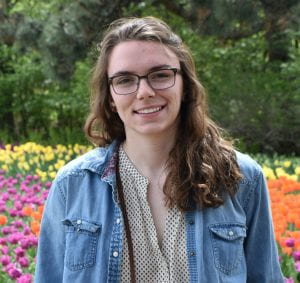How do DNA Molecules Move in Cells to Permit Protein Machines to Access Genetic Information?
Your body contains 37 trillion cells, and each one of these contains the ‘recipe’ for you. That recipe is encoded in the sequence of subunits contained in a polymer called DNA. The ‘central dogma of biology’ describes how this recipe is used to make proteins and other cellular components that self-assemble into ‘macromolecular machines,’ which carry out the processes necessary for your cells (and you) to stay alive. All of your DNA is packaged and protected in the nucleus of cells. To access the information contained in DNA, macromolecular machines need help from the minute random motions that are inherent in the microscopic world, called Brownian motions. In our lab, we study the effects of DNA’s random motions, a process called ‘DNA breathing,’ and how it influences protein binding. We will discuss two ways that we study these microscopic motions: by performing spectroscopic experiments and computer simulations. With these tools we are working to uncover the dancing motions of DNA, and the role that they play in the processes that permit life to work at the molecular level.
See a video of the presentation and slides here.
About the speaker: Claire Albrecht
 Growing up in a small, rural town in upstate New York, I had very little exposure to the scientific community. I was mostly clueless about what scientists did and what research entailed. It was not until I got to college that I discovered that there is this breed of people called researchers, who craft ways to probe nature in order to learn more about the underlying processes.
Growing up in a small, rural town in upstate New York, I had very little exposure to the scientific community. I was mostly clueless about what scientists did and what research entailed. It was not until I got to college that I discovered that there is this breed of people called researchers, who craft ways to probe nature in order to learn more about the underlying processes.
In my sophomore year of college, I fell in love with physics and understanding how the world works and why it works that way. I also got a chance to discover the joy of research first-hand while studying a sensor for detecting biomolecules and pathogens. At the end of being an undergrad, I wanted to learn more physics and continue working on research, so I decided to join the University of Oregon physics department for graduate school.
In my first year of grad school, we were tasked with deciding which research group we wanted to join. As I was exploring the research done by different groups, I was drawn to learning about how living things work. I was lucky to find a place in Andy Marcus’ Lab, where we work at the intersection of physics and chemistry to understand more about biological systems.
